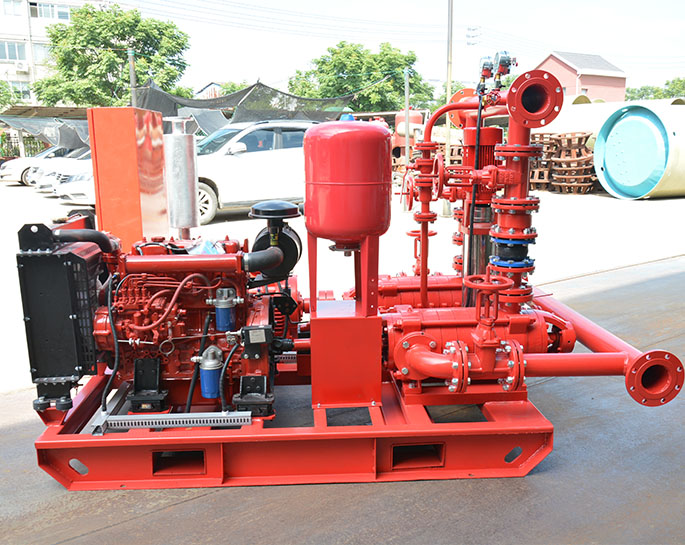The main components of the fire pump
A fire pump is a critical component of a fire protection system that provides the necessary water flow and pressure to extinguish fires. The main components of a fire pump include:
-
Pump Casing: The pump casing is the outer shell that encloses the internal components of the fire pump. It is designed to withstand high pressures and is usually made of durable materials such as cast iron or stainless steel.
-
Impeller: The impeller is a rotating component inside the pump casing that consists of curved blades. It is responsible for imparting energy to the water and increasing its pressure. The impeller is driven by a motor or engine connected to the pump.
-
Motor or Engine: The motor or engine provides the power to drive the impeller. In electric fire pumps, an electric motor is used, while diesel or gasoline engines are common in engine-driven fire pumps. The motor or engine is typically mounted on a baseplate or skid assembly.
-
Suction and Discharge Connections: The fire pump has dedicated suction and discharge connections for the water supply and the distribution system, respectively. The suction connection draws water from a water source such as a reservoir or hydrant, while the discharge connection delivers the pressurized water to the fire protection system.
-
Priming System: Some fire pumps require a priming system to remove air from the pump and suction piping, ensuring that the pump is filled with water before operation. This is especially common in centrifugal pumps, where priming helps achieve optimal performance.
-
Control Panel: The control panel houses electrical controls and monitoring devices for the fire pump. It typically includes components such as motor starters, switches, gauges, and alarms. The control panel allows for manual or automatic operation of the fire pump and provides critical information about pump performance and status.
-
Baseplate or Skid Assembly: The fire pump and its associated components are often mounted on a baseplate or skid assembly for stability and ease of installation. The baseplate or skid assembly provides a solid foundation and helps align the pump with the piping system.
-
Accessories: Fire pumps may include additional accessories to enhance their functionality and safety. These can include items such as pressure relief valves, check valves, strainers, pressure gauges, flow meters, and isolation valves.
These are the main components commonly found in fire pumps. However, it's important to note that specific designs and configurations may vary depending on the type and capacity of the fire pump, as well as the requirements of the fire protection system it serves.







